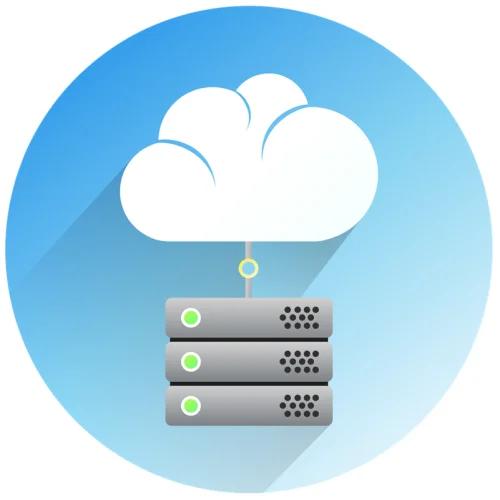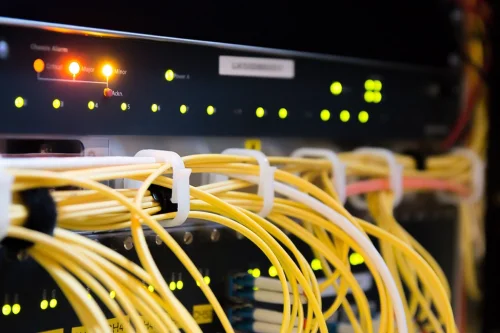
Thank you
Our team of industry domain experts combined with our guaranteed SLAs, our world class technology .


Get Immediate Help

Many organisations are not fully capable of dealing with increasingly sophisticated cyberattacks. Hackers can infiltrate your systems, and without you knowing, they move laterally and bypass your security tools. This gives them the opportunity to steal backup files, encrypt data and then demand a ransom before they return them.
According to IBM and Ponemon Institute’s ‘Cost of a Data Breach Report 2022’, ransomware attacks are more costly than average data breaches at $4.62 million and $4.24 million, respectively. Few companies can afford to pay such a ransom demand, fix a data breach, or survive it without disrupting business operations and damaging their reputation.
Although most organisations have implemented some level of detection technologies, they face the challenge of unifying numerous security tools. This is why organisations should consider implementing an Open eXtension, detection & response (XDR) strategy.
What Is Open XDR?
Being a fairly new approach to security, cybersecurity experts have varied definitions of what exactly Open XDR is. Gartner, a leading technology research and consulting firm, provides the most comprehensive definition.
They state that Open XDR is “… a platform that integrates, correlates and contextualizes data and alerts from multiple security prevention, detection and response components. XDR is a cloud-delivered technology comprising multiple point solutions and advanced analytics to correlate alerts from multiple sources into incidents from weaker individual signals to create more accurate detections.”
Because XDR is still in its early stages, developers are still working to create security products that efficiently integrate with Open XDR. Open XDR is not a single product but a holistic solution that can be integrated with different security products.
This development is especially useful for organisations that have already made security investments as it helps to integrate all existing security features.
Take a look at some features that answer the question, ‘What is Open XDR?’
Features of Open XDR
1. Vendor agnostic: Open XDR architecture can be integrated with your existing systems with tools from multiple vendors, avoiding vendor lock-in.
2. Increases visibility and threat detection: Your organisation needs visibility into your security environment to create baselines for typical network behaviour within specific environments. This allows you to detect threats and investigate the origin of the threat. It will also help your organisation stop the threat affecting other parts of your system.
3. Augments existing security stack: Open XDR is used to integrate and complement your current security technology. This allows for greater visibility and improved threat detection.
4. Data collection and analysis: For efficient Open XDR functionality, it needs access to multiple data sources. It collects information from various security layers, including cloud environments, endpoints, servers and networks.
Open XDR tools analyse this data to correlate context from thousands of alerts. It provides security experts with a smaller number of high-priority alerts that helps prevent alert fatigue.
5. Allows interconnectivity: The Open XDR system allows for interconnectivity and interaction between systems as it works and is installed as a layer on top of your current security stack.
6. Cloud-delivered system: Open XDR is cloud-delivered at scale, giving you complete ownership of the system. This allows for a higher threat detection rate, offering simplified security operations and more visibility.

7. Automated response: Microminder can help create automated playbooks that help your infosec team accelerate investigations into threats and ensure prompt responses.
This reduces the number of manual tasks and mitigates the risk of threats. It also helps your organisation update security policies to prevent a similar breach from occurring again.
Differences Between Open XDR and Native XDR
Open XDR, also known as hybrid XDR, is one of the two major types of XDR systems, with the other being native XDR. Some of the major differences between these two types of XDR security are:
| Open XDR | Native XDR |
|---|---|
| Use of third-party integrations. | No third-party integrations. |
| Integrates with your existing tools through a specially designed core XDR product and provides a central management platform. | Provides one complete security platform |
| Deep integrations connect with your current setup to perform multiple activities within your system | A single platform performs all threat detection activities and analytics |
| Existing security tools do not have to be removed or replaced. | All existing security architecture must be removed to install one platform. |
These two systems offer different advantages, so when deciding to implement an XDR system, take a look at the top benefits of executing an Open XDR system.
Benefits of Implementing an Open XDR
Open XDR solutions are designed to perform various activities that include:
These activities provide benefits to your organisation, and here we mention five of the benefits of using an Open XDR-as-service.
1. It centralises your log data and reduces the time security experts spend collecting data from numerous sources
2. Helps you achieve faster reaction times to threats through streamlined detection and response capabilities
3. Allows for scalability as your organisation grows when you require enhanced security tools and technologies
4. Saves your organisation time and money to free up more resources for profit-making activities
5. Reduces the number of false positives through constant optimisation of your security tools
So, is it necessary for you to implement an Open XDR strategy?
Here’s Why You Should Consider Open XDR Security Solutions
Security experts face the problem of educating customers about the benefits of an Open XDR system. Companies that already have security systems such as EDR (endpoint detection and response), SIEM (security information and event management) and SOAR (security orchestration, automation and response) may not see the need to install an Open XDR system.
These tools have their own capabilities; ideally, XDR should work alongside them rather than replace them.
Here at Microminder, we work to provide the most comprehensive Open XDR security solutions, so keep reading as we show you how Open XDR can support the above systems. We also compare their capabilities, which will help you see how Microminder’s Open XDR can augment your existing network security technologies.
How Open XDR Supports SIEM
SIEM is used to collect alert logs and ensure compliance, data storage and analysis. It combines security information management (SIM) and security event management (SEM). The main functions of SIEM include:
SIEM is focused on log collection, compliance data storage, analysis and reporting alerts. However, it cannot adequately identify threats unless connected to a separate security system. Open XDR can adequately fill this gap and support SIEM by providing threat-based use cases.
How Open XDR Supports SOAR
SOAR often works alongside SIEM, but this lateral connection is the only integration mechanism SOAR has. It cannot perform big data analytics or protect your network from breaches.
SOAR faces the challenge of integrating various siloed tools. It must be properly configured to work efficiently – a task that takes a lot of your employees’ time. A system failure may also disrupt or disconnect the data feeding into the system. This results in a large number of false positives and low-priority alerts.
XDR enhances SOAR by breaking down these siloes and integrating all your cybersecurity tools. It also provides:
XDR, however, should not fully replace SOAR as it cannot use playbooks to perform orchestration activities. It also can’t automate actions outside incident responses, meaning it cannot fully replace SOAR.
For this reason, it is advisable to hire a professional Open XDR vendor like Microminder to implement the correct XDR strategy to merge the two security tools.
How Open XDR Supports EDR

EDR uses behaviour analysis to identify threats at your endpoints and help you perform kill chain analysis. It provides greater network visibility and prevents unknown threats from infiltrating your systems. It also helps your team filter network traffic and automates rule-based event responses to ensure prompt remediation and mitigation of threats.
So how does XDR provide additional support to EDR?
Four Questions to Ask Before Choosing the Right XDR Solution
What to Expect from Microminder’s Open XDR Solution
Our Open XDR solution offers a unique approach to enhancing your security posture to ensure your network is impenetrable. You will need infosec experts with previous XDR service experience to ensure you have integrations suited to your needs.
Microminder’s team has the capabilities to design a core Open XDR platform, and after consultations with security teams, we can implement a fully personalised advanced Open XDR solution.
Our security experts will provide you with best-of-breed vendor technology solutions and a combination of advice on using AI/ML and human intelligence.
The end result is that your SecOps team will be able to respond quickly to alerts and promptly remediate security issues. We will also help them become more efficient with fully integrated automated actions.
Reduce the cyber risk to your company, and talk with Microminder’s team for an initial consultation.
Don’t Let Cyber Attacks Ruin Your Business
Call: +44 (0)20 3336 7200
Call: +44 (0)20 3336 7200
Quick Links
To keep up with innovation in IT & OT security, subscribe to our newsletter
Recent Posts
Cloud Security | 10 August 2023
Cloud Security | 10 August 2023
Cloud Security | 10 August 2023
FAQs
What will cybersecurity look like in 10 years?
Ideally, in a decade, cybersecurity will feature algorithms that enable individuals and corporations to create specific bots that hunt, identify and remediate threats and bad bots.What are the top challenges to cybersecurity in 2022?
2022 witnessed cybersecurity challenges like a rise in supply chain attacks and increased targeting of cloud services.What are the top 5 emerging cybersecurity threats?
The top 5 emerging cybersecurity challenges include:Unlock Your Free* Penetration Testing Now
Secure Your Business Today!
Unlock Your Free* Penetration Testing Now

Thank you for reaching out to us.
Kindly expect us to call you within 2 hours to understand your requirements.